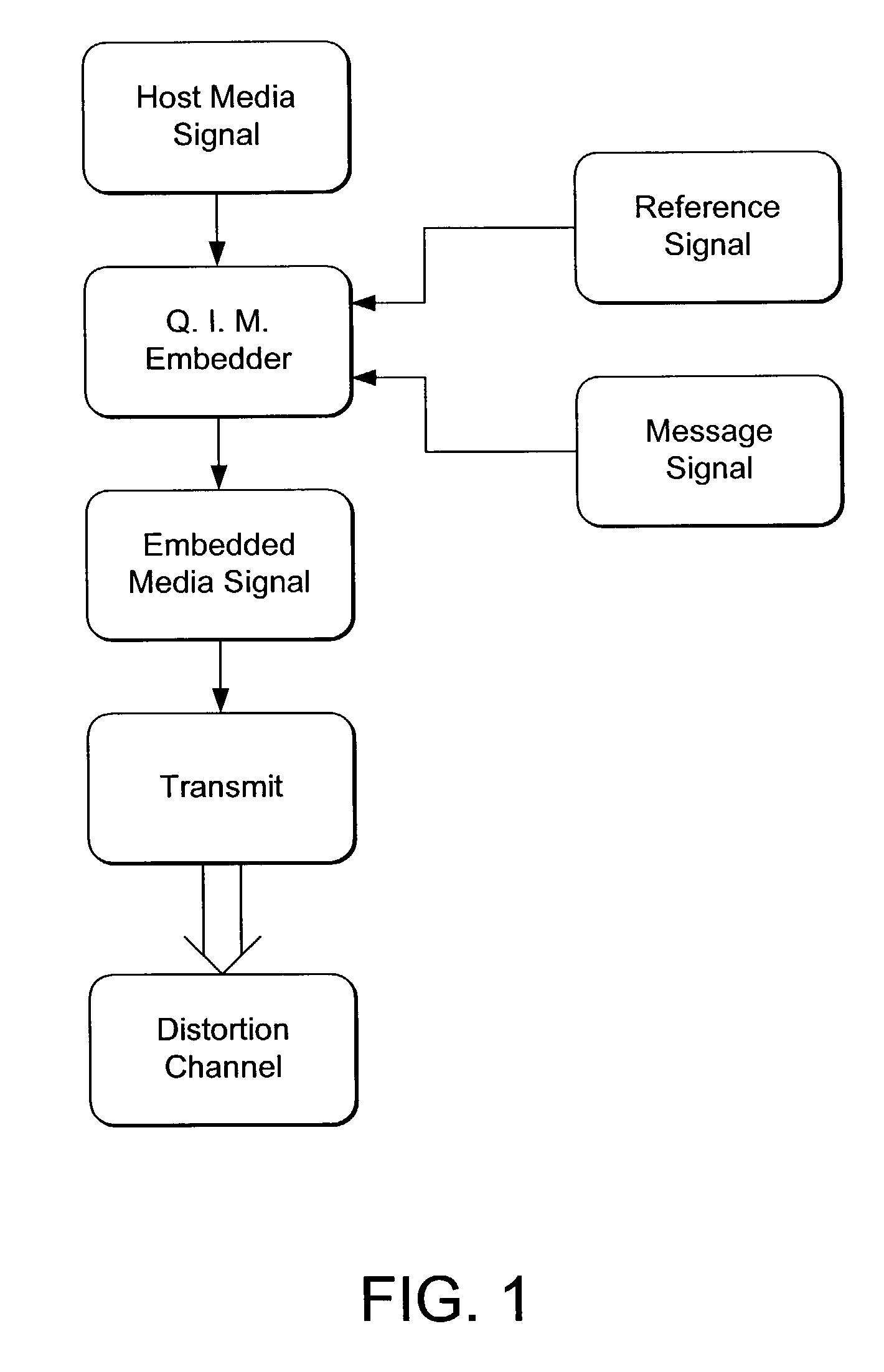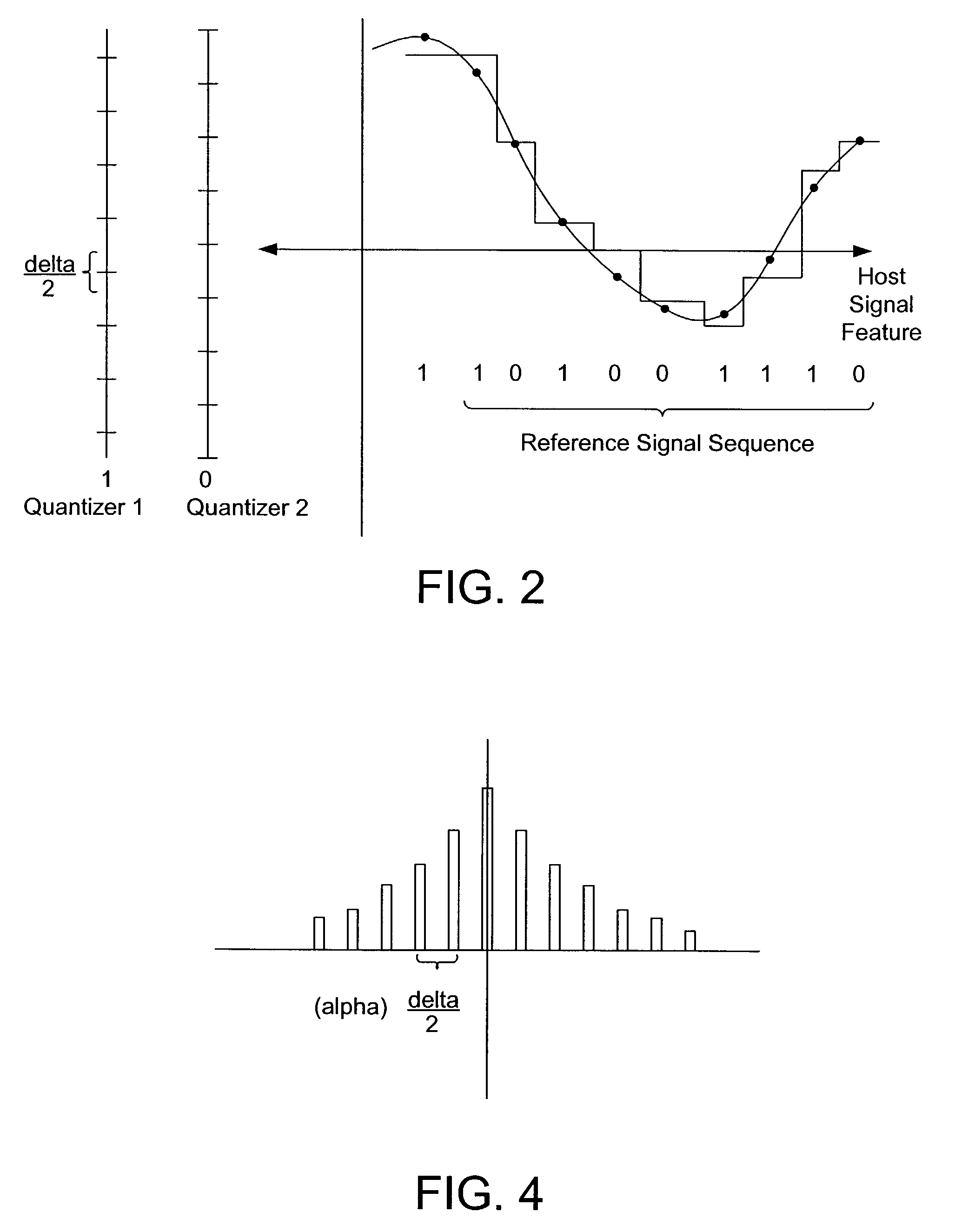Media signal filtering for use in digital watermark reading
a filtering and digital watermark technology, applied in the field of multimedia signal processing, steganography and data hiding, can solve the problems of distorted samples, misalignment of quantization bins, and symbol errors, so as to reduce the impact of distortion, reduce the impact of symbol errors, and decode more accurately
- Summary
- Abstract
- Description
- Claims
- Application Information
AI Technical Summary
Benefits of technology
Problems solved by technology
Method used
Image
Examples
Embodiment Construction
Synchronization in Quantization Based Data Hiding Systems
[0022]This section describes techniques for synchronizing auxiliary data readers in quantization based data embedding systems.
[0023]FIG. 1 is a diagram illustrating a quantization type data embedder that embeds a reference signal for synchronization. The embedder receives a host media signal such as a block of audio or image data. For the sake of illustration, we describe embedders that operate on samples in the spatial domain of a digital image block (e.g., luminance samples) and the time domain of a digital audio block. Alternatively, the block of image data may be transformed into samples in a DCT, DWT, DFT, Fourier Mellin, Gabor, autocorrelation or some other transform domain. The block of audio data similarly may be transformed into subbands, frequency coefficients, a time-frequency spectrogram, autocorrelation domain, etc. In such cases, the quantization embedder modifies samples in the transform domain, and an inverse t...
PUM
 Login to View More
Login to View More Abstract
Description
Claims
Application Information
 Login to View More
Login to View More - R&D
- Intellectual Property
- Life Sciences
- Materials
- Tech Scout
- Unparalleled Data Quality
- Higher Quality Content
- 60% Fewer Hallucinations
Browse by: Latest US Patents, China's latest patents, Technical Efficacy Thesaurus, Application Domain, Technology Topic, Popular Technical Reports.
© 2025 PatSnap. All rights reserved.Legal|Privacy policy|Modern Slavery Act Transparency Statement|Sitemap|About US| Contact US: help@patsnap.com



